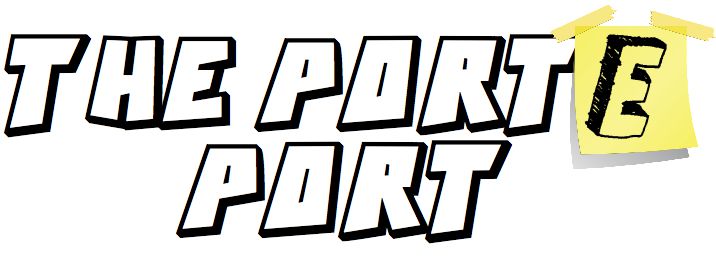How To Write Tension Like Stephen King
A dark shape came crawling from under the guardrail as I drove home late one night.
It spilled out onto the road in front of my car.
I came to a halt.
Slowly it rose as my brain tried to decipher what I was seeing.
My imagination took off when its eyes began to glow in my headlights.
We were two frozen figures in time as the dark closed in around us.
It was only then that I realized what stood before me.
A deer.
It had somehow gotten stuck under the guardrail and was desperately trying to free itself. And, it accomplished it’s task right when I was coming by.
My heart rate lowered, and I laughed, realizing he was looking at me as confused as I was. What a derp.
I slowly went around, and he ran alongside my car for a moment. It was an awkward moment that felt like we both said goodbye, but neither realized we were leaving in the same direction. I hate it when that happens.
Sometimes all the excitement of a moment is in the asking of questions, rather than the getting of answers.
We fear the unknown.
Once we have answers, we start compartmentalizing what’s happened. We define it and create boundaries for it. It’s in the light for everyone to see.
That got me thinking about tension in a story.
We love tension in our stories. We crave scenes where we lean forward, hands sweat a little, and our hearts start pounding. We start overthinking it only when it all gets resolved.
But, in that moment. Oh...it’s pure adrenaline.
If you can get the pupils of your readers dilating, you got a damn good thing going.
It’s not easy to pull off. There’s a lot of work beforehand to make those scenes really impact your readers.
Let’s look at a master of creating tension and causing knots in your stomach: Stephen King.
Wait…that’s not 6 feet guys!
Yeah, we’re gonna look at The Stand. Not exactly a read to help escape the news right now, but still. On the other hand, like any Stephen King book, it will take up your whole quarantine time with some leftovers, I’m sure.
The scene comes in the second half of the book, so SPOILERS if you are interested in reading it.
If you know nothing of The Stand, essentially, a disease has spread across the planet, killing a ridiculous amount of people. Like 99.9% of everyone.
WASH YOUR HANDS PEOPLE!
The survivors in the U.S. all feel compelled to head to Colorado. As survivors are want to do. All are seemingly called by an old woman who kinda just wants to cook dinner for everyone.
I’d explain the context better, but hell, that sounds pretty good actually.
Let me break down the characters involved.
First, we have our protagonist of sorts: Stu Redman. Well, he’s one of the many. And that plays an essential part in the tension, as we will see in a second
Second, we have Harold Lauder. From the very beginning, King’s descriptions of this character make you want to take a shower (and clean out your ears). There’s a constant feeling of wanting to distance yourself from him.
And the other characters feel exactly the same way.
So, he becomes an emotionally isolated self-hating/hating-everyone wild card. As he gets more desperate to retaliate against Stu for “stealing his woman,” as Harold would put it, the more unpredictable he becomes.
The old woman, Abagail Freemantle, goes wandering off into the woods looking for answers to the spiritual warfare that seems to take place under the surface of everything.
And everyone freaks out. (Shes a hundred something years old, so there’s good reason).
Harold organizes a party to go look for her, looking like he really cares about their caretaker.
Uh, yeah, he doesn’t.
Harold starts chatting with the dark forces in the world and prepares to go through with murdering Stu while they are all out in the wilderness.
It’s his best chance at taking him out. We’ve had half a book to see how much Harold has come to hate Stu. There’s no doubt that the motive is there.
But does he have the spine for it?
King purposefully sets up this scene where Harold begins feeling the presence of this dark power. Maybe this will give Harold the guts to go through with it.
Harold has one more worry for us too. He’s hiding a gun in his jacket. Oh goodie.
As the characters chat with each other over walkie-talkies, Harold forms a solid plan.
He calls for everyone to meet somewhere he knows Stu will make it first.
King slowly builds up to this scene. Every new detail he reveals to us gives us something new to worry about. He has created a powder keg that’s ready to blow.
But, you’re logical. You know you have a good chonk of book left. No way King kills off a main character like this.
Until you realize Stu is just one of many. A main character death here would actually make some sense. It would send the fragile peace in Colorado over the edge and spiral everything into the climax of the story.
Damn it.
Then we see Harold wait for Stu.
Why?
It makes us wait to and start to play out in our heads what’s going to happen.
If Harold shoots Stu, the others in the search party are eventually gonna figure it out. Wait...what if Harold takes them all out? No one has a gun besides Harold.
It gets worse and worse.
Considering that all in the search party are important members of what little leadership there is, Harold could go back into town and tell whatever story he wanted.
He is a writer, after all.
We get so focused on the action in story scenes that it’s easy to forget that the breath before the plunge can be just as, if not more, exciting.
But King kinda knows what he’s doing.
When Stu shows up before the rest of the search party, we hold our breath too.
All the pieces are in place just the way Harold wanted it. And he seems ready to do anything.
The two characters start talking, and Harold becomes nervous. We all know what that means. His decision moment is about to happen.
And like that shape struggling to get out from under the guardrail by my car, our imagination plays on our anxiety.
It’s this moment you want to set up. The in-between time when choices are being made. How will it all play out?
You want your reader to invest here. The outside world should melt away. Let the darkness of that tension close in around them.
Hold only for a moment. Just enough to let imaginations scream and a page to be quickly turned.
Then resolve it.
King throws a curveball at Harold when Stu decides to compliment the kid. Harold doesn’t know what to do with it, and the rest of the search party shows up before he can find the hatred again to move past it.
And we sit relieved. Thankful even.
Ultimately, this scene has no action or death. There isn’t some over the top struggle of evil powers. It’s just two people having a conversation.
And one has a gun in their jacket.
Maybe that’s the best thing to repeat to yourself when you are trying to develop a scene with tension that wants to boil over.
Tension is two people talking, but one of them is hiding a gun.
When you start sweating reading a tense part in a book or watching a tense scene, start paying attention:
How did you get here?
Why are you worried?
Where did your imagination take the scene?
Then you can take that data and start applying to your writing too.
In time, and practice, you can have your readers terrified, yet captivated, just like Stephen King.
If you want to get more advice from the greats like Stephen King, sign up for my newsletter below. We will get to geek out over Lord of the Rings, Zelda, Star Wars, and more…and all of it will help our writing.








